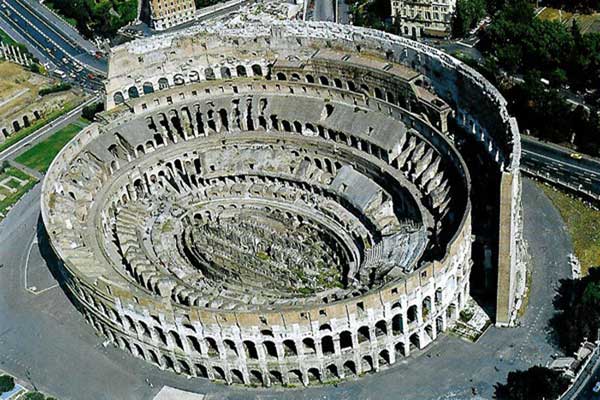 |
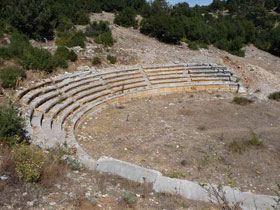 |
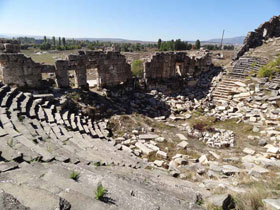 |
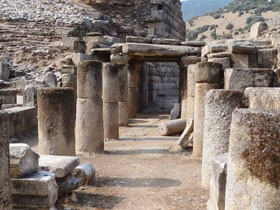 |
||||
| Glossary of terms |
Adada |
Aizanoi |
Alabanda |
||||
| What's an amphitheatre? What is a Roman and what is a Greek theatre? |
Greek theatre, not yet excavated. Seven rows of seats are visible. Capacity: unknown |
Roman theatre from the 1st century A.D. Adjoins the stadium directly. Capacity: approx. 7,000 spectators |
Roman Hellenistic theatre from the 1st century A.D. The seat stones are missing on a large scale. Capacity: approx. 8,000 spectators | ||||
| more: | more: | more: | more: | ||||
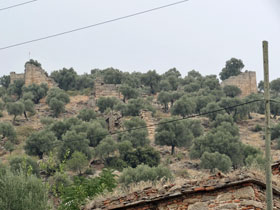 |
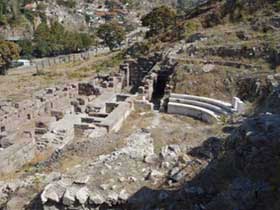 |
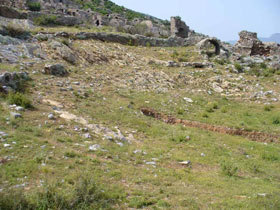 |
 |
||||
|
Alinda |
Ancyra (Ankara) |
Anemurium |
Antiochia ad Cragum | ||||
| Hellenistic theatre from the 2nd century B.C. Today hardly accessible on a steep slope. Capacity: approx. 5,000 spectators |
Roman theatre from the 1st / 2nd century A.D. Is only mentioned in very few sources. Capacity: approx. 3,000 - 5,000 spectators |
Roman theatre of Hellenistic origin. The seat stones are completely missing. Capacity: approx. 5,000 spectators |
Roman theatre, Bouleuterion or Odeon. Two rows of seats are visible. Capacity: unknown |
||||
| more: | more: | more: | more: | ||||
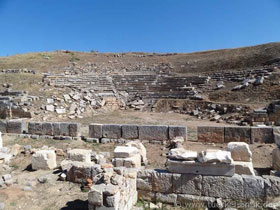 |
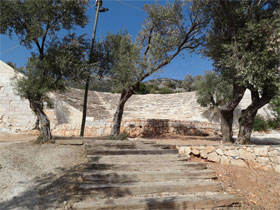 |
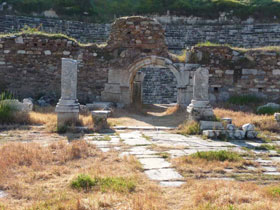 |
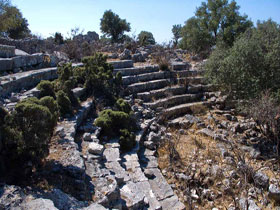 |
||||
|
Antiochia ad Pisidiam |
Antiphellos |
Aphrodisias |
Apollonia (Lykien) | ||||
|
Roman theatres, probably built in the early 1st century BC. Capacity: approx. 5,000 spectators |
Hellenistic theatre from the early 1st century B.C. Capacity: approx. 5,000 spectators |
Greek theatre, built in the 1st century BC, probably consecrated in 35 BC. Capacity: approx. 10,000 spectators |
Hellenistic theatre, not yet excavated and explored. Capacity: approx. 2,000 spectators |
||||
| more: | more: | more: | more: | ||||
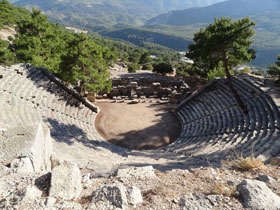 |
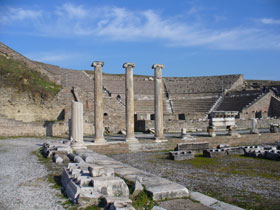 |
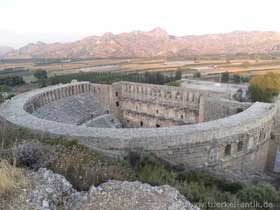 |
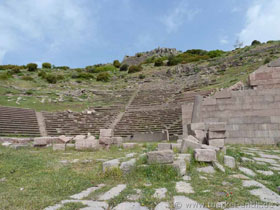 |
||||
| Arykanda | Asklepieion von Pergamon | Aspendos | Assos | ||||
|
Excellent preserved Greek theatre from the 2nd century BC. Capacity: approx. 3,000 spectators |
Roman theatre, built under Emperor Hadrian in the 1st century AD. Capacity: approx. 3,500 spectators |
Roman theatre, built in the 2nd century A.D. under Antoninus Pius or Mark Aurel. Capacity: approx. 20,000 spectators |
Greek theatre of early Hellenistic origin. Capacity: approx. 5,000 spectators. | ||||
| more: | more: | more: | more: | ||||
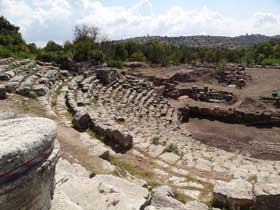 |
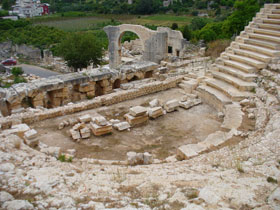 |
 |
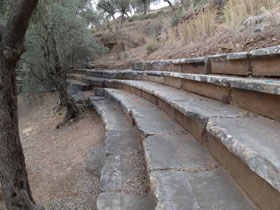 |
||||
| Diokaisareia | Elaiussa Sebaste | Ephesos | Euromos | ||||
| The Roman theatre from the 2nd century A.D. has been completely excavated and researched since 2017. Capacity: approx. 2,000 spectators |
Greek-Roman theatre from the 2nd century A.D.
Capacity: approx. 2,500 spectators |
Originally a Greek theatre from the 3rd century BC. Expanded in the 1st and 2nd centuries AD.
Capacity: approx. 25,000 spectators |
The Hellenistic theatre probably dates from the second century BC.
Capacity: unknown |
||||
| more: | more: | more: | more: | ||||
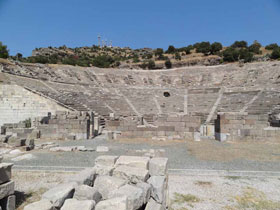 |
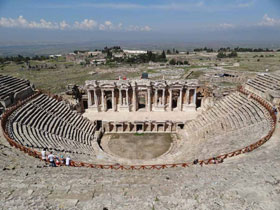 |
 |
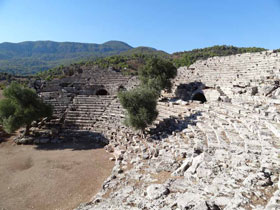 |
||||
| Halikarnassos | Hierapolis | Kadyanda | Kaunos | ||||
|
Hellenistic theatre from the 1st half of the 3rd century BC or in the late 2nd century BC.
|
Roman theatre, from 60 A.D. as a replacement for a Hellenistic theatre from the 2nd century BC.
Capacity: approx. 10,000 spectators |
Late Hellenistic theatre with a badly destroyed stage from the Roman Empire.
Capacity: approx. 5,000 spectators. |
Originally a Greek theatre, rebuilt and enlarged in Roman times.
Capacity: approx. 5,000 spectators |
||||
| more: | more: | more: | more: | ||||
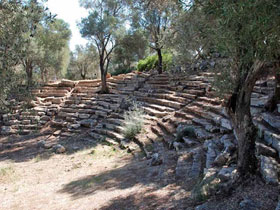 |
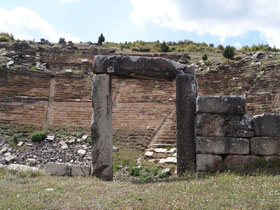 |
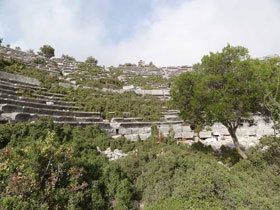 |
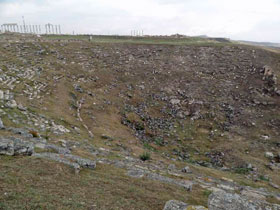 |
||||
| Kedreai | Kibyra | Kyaneai | Laodikeia ad Lykos (North-Theatre) | ||||
|
Hellenistic theaters not yet explored and excavated.
Capacity: unknown |
Hellenistic theatre, enlarged in Roman times and provided with a stage house.
Capacity: approx. 15,000 spectators |
Hellenistic theatre from the 2nd century B.C. Not yet extensively researched.
Capacity: unknown |
Originally a Hellenistic theatre, extensive renovations in the 2nd century AD.
Capacity: approx. 12,000 spectators |
||||
| more: | more: | more: | more: | ||||
 |
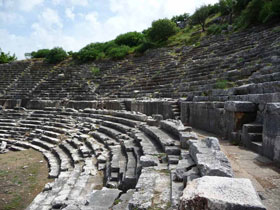 |
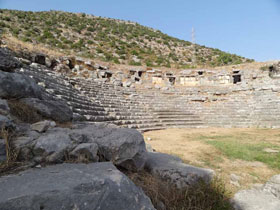 |
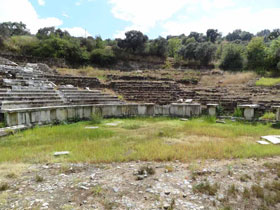 |
||||
| Laodikeia ad Lykos (West-Theatre) | Letoon | Limyra | Magnesia | ||||
|
DThe smaller, originally Hellenistic theatre was used until the 7th century AD.
Capacity: approx. 8,000 spectators |
Hellenistic theatre, built around 100 BC and used until the Roman Empire.
Capacity: approx. 5,000 spectators |
Hellenistic theater, beginning of the first. It was erected in the XVI century BC. Capacity: approx. 15,000 spectators. |
Late Hellenistic theatre, in the 1st century A.D. construction work finished due to landslide.
Capacity: 4,700 spectators planned. |
||||
| more: | more: | more: | more: | ||||
 |
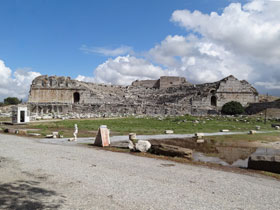 |
 |
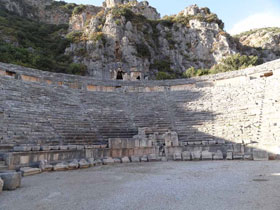 |
||||
| Metropolis | Miletus | Milyos | Myra | ||||
|
Hellenistic theatre from the 3rd century B.C. Partly improperly restored with concrete.
Capacity: approx. 5,000 spectators |
Roman theatre, built in the 1st century A.D. over a much older Hellenistic theatre.
Capacity: approx. 15,000 spectators |
Hellenistic theatre, city and theatre are still largely unexplored.
Capacity: unknown |
Originally a Greek theatre, it was probably built in the 1st century BC.
Capacity: approx. 12,000 spectators |
||||
| more: | more: | more: | more: | ||||
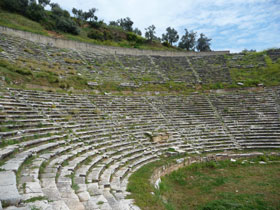 |
 |
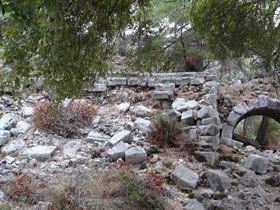 |
 |
||||
| Nysa | Olba | Olympos | Patara | ||||
|
Roman theatre, probably built in the 1st century BC.
Capacity: approx. 12,000 spectators |
Probably Roman theatre. 11 rows of seats and parts of the stage house are preserved.
Capacity: unknown |
Roman theatre, in very bad condition. Not yet excavated and researched.
Capacity: unknown |
Originally a Greek theatre, probably built between the 3rd and 1st centuries BC.
|
||||
| more: | more: | more: | more: | ||||
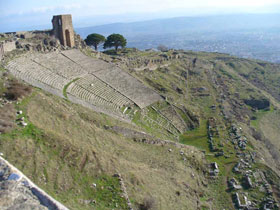 |
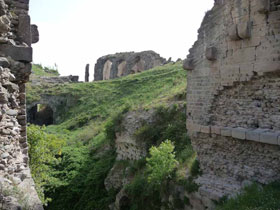 |
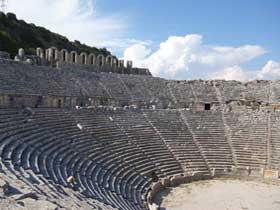 |
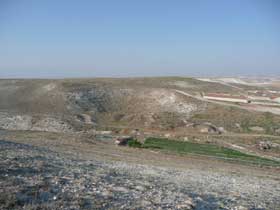 |
||||
| Pergamon | Pergamon Amphitheater | Perge | Pessinus | ||||
|
Greek theatre, traces point to the start of construction in the 5th century BC.
Capacity: approx. 10,000 spectators |
Roman amphitheatre, built at the end of the 1st century AD / beginning of the 2nd century AD.
Capacity: unknown |
Roman theatre, built between 70 AD and the middle of the 2nd century AD.
Capacity: approx. 15,000 spectators |
Roman-Hellenistic theatre, probably from the middle of the 1st century A.D. (under Hadrian) Capacity: approx. 8,000 spectators |
||||
| more: | more: | more: | more: | ||||
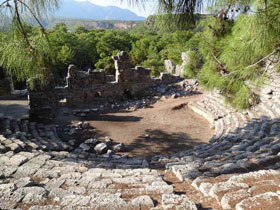 |
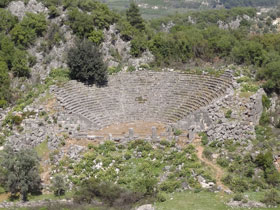 |
|
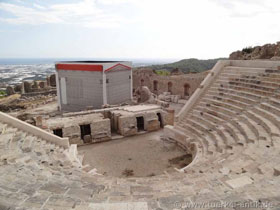 |
||||
| Phaselis | Pinara | Priene | Rhodiapolis | ||||
|
Hellenistic theatre from the 1st century B.C. Stage house from Roman times.
Capacity: approx. 1,700 spectators |
Hellenistic theatre from the 2nd century BC, rebuilt ca. 175-210 AD by the Romans.
Capacity: approx. 2,000 spectators |
Hellenistic theatre from the 3rd century BC Rebuilt by Romans in the 2nd century BC.
|
Greek theatre from the 1st century B.C. Stage house from the Roman Empire.
|
||||
| more: | more: | ||||||
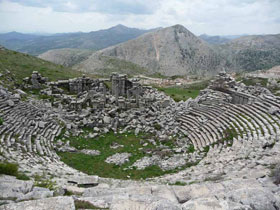 |
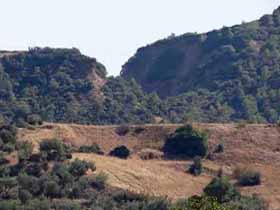 |
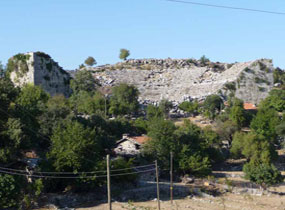 |
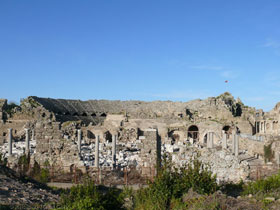 |
||||
| Sagalassos | Sardes | Selge | Side | ||||
|
Roman theatre, built between 180 and 200 AD. Destroyed by earthquakes.
Capacity: approx. 8,000 spectators |
Hellenistic theatre from the 6th century BC 17 AD restored by Romans for the last time.
Capacity: 11,000 - 20,000 spectators |
Roman theatre from the 2nd century A.D. The stage house has been completely destroyed.
Capacity: approx. 9,000 spectators |
Originally a Hellenistic theatre, restored by Romans for the last time in the 2nd century AD.
|
||||
| more: | more: | more: | more: | ||||
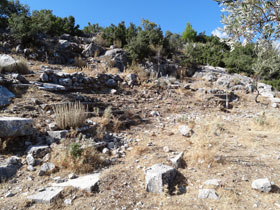 |
 |
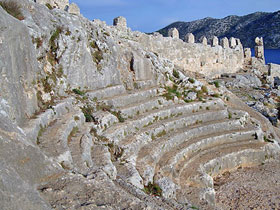 |
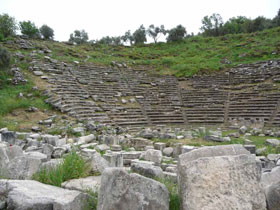 |
||||
| Sidyma | Sillyon | Simena | Stratonikeia | ||||
|
Small, probably Roman theatre. There are only a few rows of seats left.
|
Small Hellenistic theatre, rebuilt by Romans in the 2nd and 3rd century AD.
|
The smallest theatre in Lycia was completely carved out of the rock.
Capacity: approx. 400 spectators |
Originally a Hellenistic theatre, restored by Romans for the last time in the 1st century AD.
Capacity: approx. 15,000 spectators |
||||
| more: | more: | more: | more: | ||||
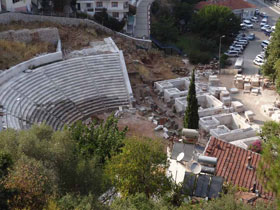 |
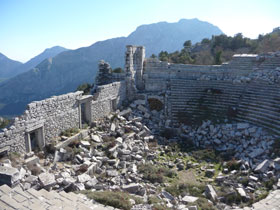 |
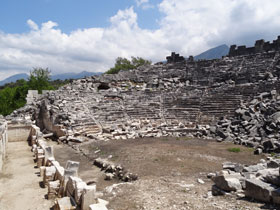 |
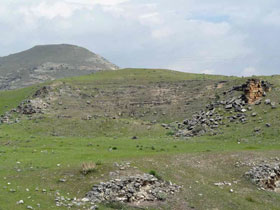 |
||||
| Telmessos | Termessos | Tlos | Tripolis ad Maeandrum | ||||
|
Late Hellenistic Theatre, 2013 - 2016 halfway restored by Museum Fethiye.
Capacity: approx. 8,000 spectators |
Originally a Greek theatre from the early 2nd century BC.
Capacity: approx. 4,500 spectators |
Roman theatre, built in the 1st century A.D., probably under Emperor Augustus.
Capacity: approx. 15,500 spectators |
Hellenistic-Roman theatre, from the 2nd century AD. It hasn't been excavated yet.
Capacity: approx. 8,000 spectators |
||||
| more: | more: | more: | more | ||||
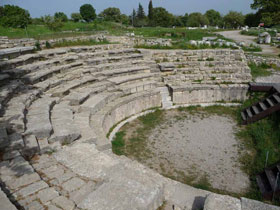 |
 |
. | |||||
| Troy | Xanthos | ||||||
|
Roman theatre or Odeon. There are no indications of a roofing as usual with the Odeon.
Capacity: approx. 1,000 spectators. |
Originally Greek theatre from the 2nd century B.C. In the 2nd century A.D. Reconstruction
Capacity: approx. 8,000 spectators |
||||||
| more: | more: | ||||||
|
|